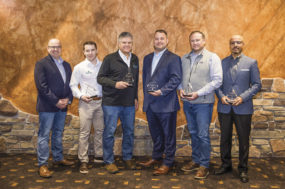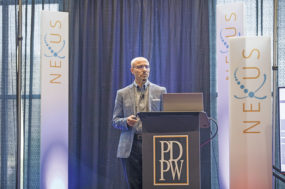Smells of artery-constricting, deep-fried goods waft through the air. Kids scream from above as they wage a mighty battle between their intestinal fortitude and deep-fried Twinkies, combined with 4 G’s of substandard carnival machinery. Somewhere in the dairy barn, a 4-H kid frantically puts the final touches on their prized calf. It’s the time of year that my younger self viewed as bittersweet. For a 14-year-old boy, the state fair meant the excitement of a Tim McGraw song, barbeque stains on white t-shirts, girls in miniskirts and (unfortunately) an end to summer.
It was an opportunity to showcase that registered calf, which was bought with hours of hard work on the farm. A calf that invariably would never breed back as a milk cow and wouldn’t budge an inch when pushed into the milking parlor. It was an opportunity to learn the value of hard work. It was also an opportunity to learn hard work doesn't always translate into success. In many ways, it was great training for the oscillations that come with the dairy industry and in life.
The state fair was a blessed event where the agriculture community could cross the rural/urban divide, win hearts and minds, and showcase the beautiful connection between a farmer and their animals. At least that’s how it’s drawn up, anyway.
This article is somewhat therapeutic and a bit of a confession of sins on my part, because my younger self hadn’t yet gotten the memo of state fair unity. It was a late summer day at the Washington State Fair in Puyallup, Washington. If you have never been to the Washington State Fair, visualize a sea of people that are so culturally diverse it would make a Fortune 500 CEO hit every environmental, social and governance metric in the company. The National Dairy Checkoff would view it as a target-rich environment for getting outside of the dairy and agriculture bubble. The fields were ripe for harvest. Your young author, however, had not been through the appropriate training on how to win hearts and minds for the dairy industry. This led to an ill-fated interaction that most likely doomed public perception in at least one household.
There were three young guys walking through the dairy barn, with all the pretension of a vegan who just finished searing their cauliflower to an exceptional medium-bland. They walked over to a very juvenile version of your humble writer and asked loudly, “Do your cows have BST?” For context, this was the early ’90s, and bovine somatotropin (BST) was more commonly used. So, when asked this question, the scientific answer was, invariably, “Yes.” They condescendingly followed this answer with, “Do you drink the milk?”
I responded with what would best be described as a full-body seizure. I simultaneously rolled around in the straw, tried to bite my own ear off and haphazardly flailed my arms. This response can be chalked up to the vagaries of adolescent youth, a twisted sense of humor and the young mind of an influencer not yet polished by people of the dairy checkoff. The “seizure” elicited the desired response, and the three Seattleites ran from the dairy barn, never to consume dairy products in their lifetime.
Again, I’m not proud of myself. However, the retelling of this story is very therapeutic. Since that moment, I’ve been properly reformed by the powers that be and seek daily to expound on the benefits of dairy products.
Until next time, keep the cows fed, the teats clean and take some time to enjoy the pasture.




